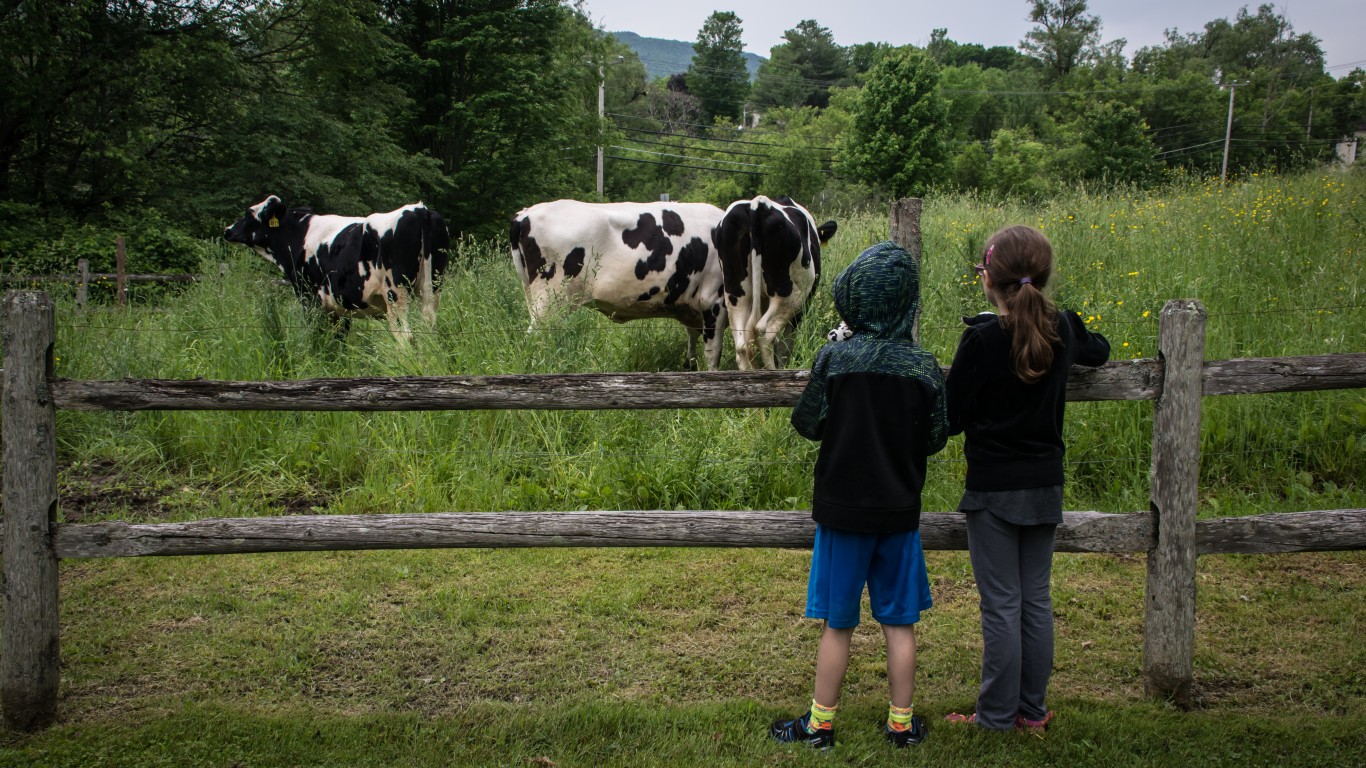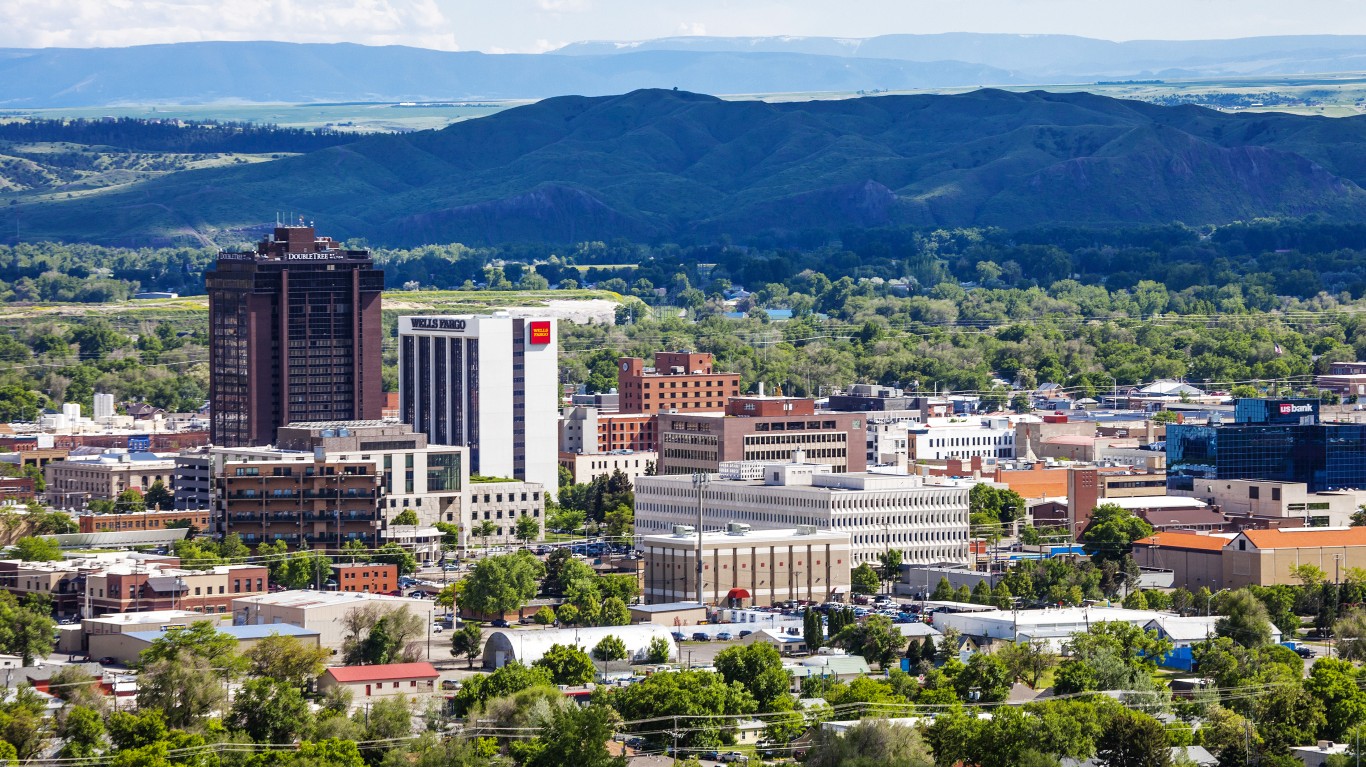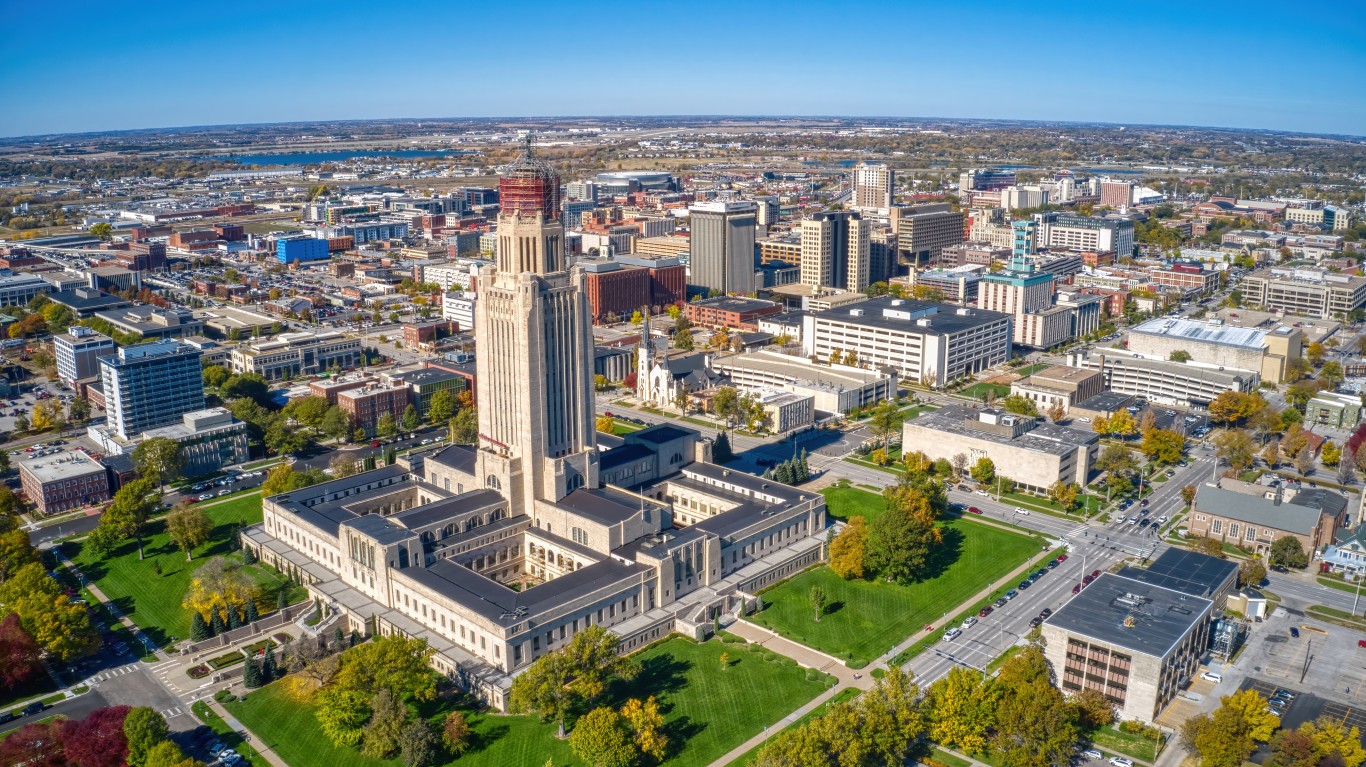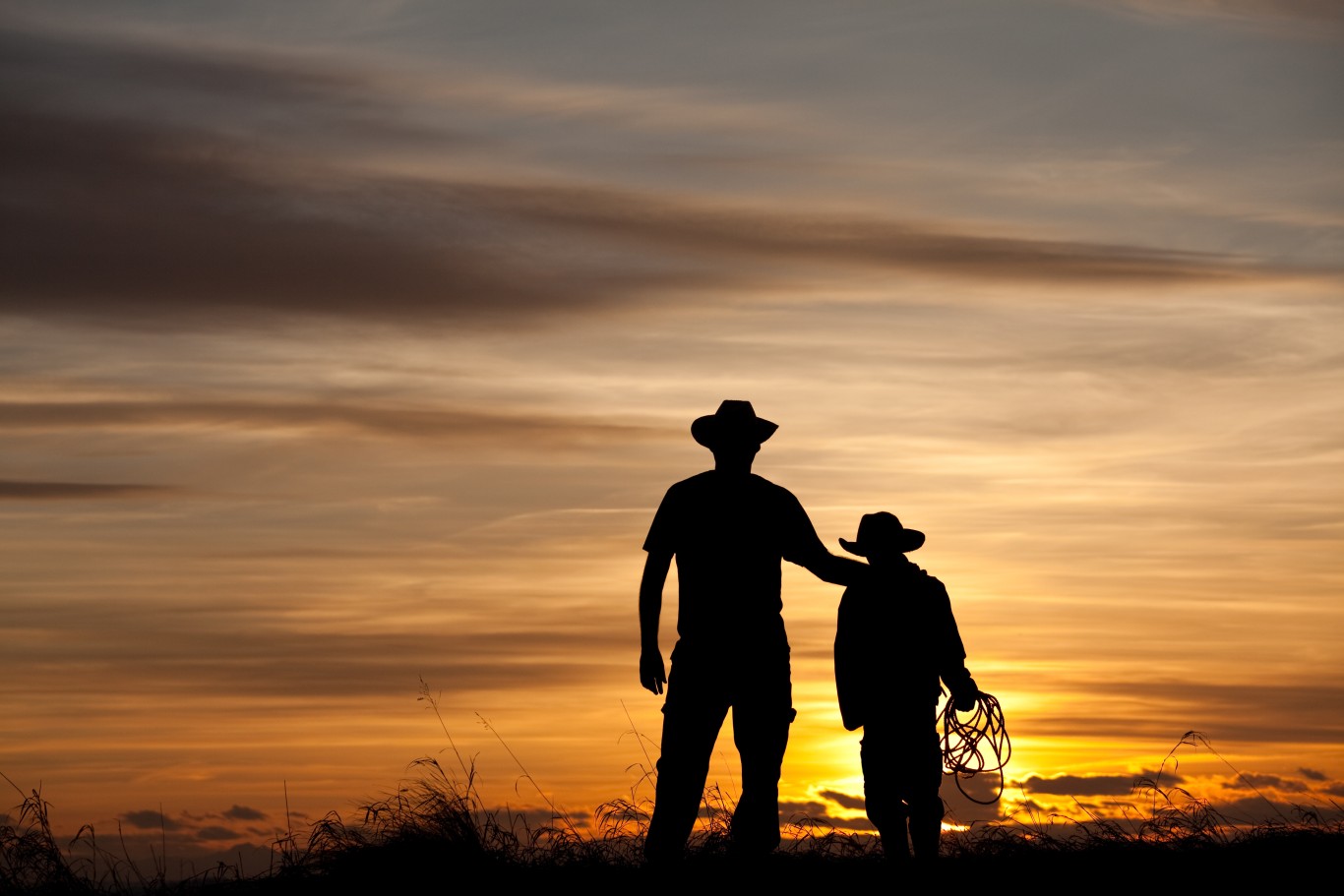
In the early months of the coronavirus pandemic, many media outlets and researchers predicted that with all of those stay-at-home orders and work-stoppage mandates, couples would huddle together for some extra randy “Netflix and chill,” leading to a significant increase in 2021 birth rates. News headlines bleated that a “COVID-19 baby boom” would erupt in 2021.
But that boom turned out to be so small that it barely measured as a year-over-year increase (though it was the first such rise since 2014). The Centers for Disease Control and Prevention’s National Center for Health Statistics counted 3,664,292 live births across the country in 2021 – statistically less than a 1% increase over the previous year. And data from 2022 indicates that the country’s fertility rate is back on its decades-long downward trend. A preliminary estimate by the CDC counts 3,661,220 babies were born in the U.S. last year – nearly a 1% decrease from 2021. (See how many people were born the year you were born.)
“We’re back where we started before COVID hit,” Phillip Levine, an economics professor at Wellesley College who researches fertility rates, told the Stateline nonprofit news network. In 2022, women in 37 U.S. states had fewer children than the previous year. In 10 of these states, the decline ranged from 2.2% (in Louisiana) to 5.28% (in Wyoming).
To identify the states where births declined last year, 24/7 Tempo reviewed the number of births in each state in 2021 and 2022 using preliminary data from the Centers for Disease Control and Prevention. Population statistics for each state came from the U.S. Census Bureau. Provisional counts may differ by approximately 2% from final counts, due to rounding and reporting variation. Additionally, the accuracy of the provisional counts may change over time.
Click here to see the states with the biggest drops in births last year
Among the top 10 most-populous states – home collectively to more than half the people in the country – only Texas, Florida, and Georgia recorded year-over-year increases in live births last year. Five of these high-population states experienced declines above the national average. For example, Illinois women birthed nearly 53,000 fewer babies last year than in 2021, a 3.1% drop. (These are the states where deaths are outpacing births.)

37. Alaska
> Change in annual live births, 2021-2022: -2
> Births in 2022: 9,372 – #3rd fewest
> Births in 2021: 9,374 – #3rd fewest
> Change in live births from 2007: -1,680 – #5th smallest decrease
> Population 16 and over: 558,541 -#3rd smallest
[in-text-ad]

36. Vermont
> Change in annual live births, 2021-2022: -21
> Births in 2022: 5,230 – the fewest
> Births in 2021: 5,251 – the fewest
> Change in live births from 2007: -1,283 – #3rd smallest decrease
> Population 16 and over: 520,047 -#2nd smallest

35. Montana
> Change in annual live births, 2021-2022: -29
> Births in 2022: 11,216 – #7th fewest
> Births in 2021: 11,245 – #7th fewest
> Change in live births from 2007: -1,223 – #2nd smallest decrease
> Population 16 and over: 876,455 -#8th smallest

34. Idaho
> Change in annual live births, 2021-2022: -31
> Births in 2022: 22,445 – #14th fewest
> Births in 2021: 22,476 – #14th fewest
> Change in live births from 2007: -2,574 – #10th smallest decrease
> Population 16 and over: 1,459,985 -#13th smallest
[in-text-ad-2]

33. Oklahoma
> Change in annual live births, 2021-2022: -104
> Births in 2022: 47,986 – #24th fewest
> Births in 2021: 48,090 – #24th fewest
> Change in live births from 2007: -7,079 – #22nd smallest decrease
> Population 16 and over: 3,048,169 -#23rd smallest

32. Kansas
> Change in annual live births, 2021-2022: -118
> Births in 2022: 34,759 – #18th fewest
> Births in 2021: 34,877 – #17th fewest
> Change in live births from 2007: -7,245 – #23rd smallest decrease
> Population 16 and over: 2,247,289 -#16th smallest
[in-text-ad]

31. Iowa
> Change in annual live births, 2021-2022: -151
> Births in 2022: 36,817 – #21st fewest
> Births in 2021: 36,968 – #21st fewest
> Change in live births from 2007: -4,069 – #13th smallest decrease
> Population 16 and over: 2,462,467 -#19th smallest

30. Hawaii
> Change in annual live births, 2021-2022: -164
> Births in 2022: 15,448 – #11th fewest
> Births in 2021: 15,612 – #11th fewest
> Change in live births from 2007: -3,686 – #12th smallest decrease
> Population 16 and over: 1,134,067 -#11th smallest

29. South Dakota
> Change in annual live births, 2021-2022: -178
> Births in 2022: 11,340 – #8th fewest
> Births in 2021: 11,518 – #8th fewest
> Change in live births from 2007: -921 – #the smallest decrease
> Population 16 and over: 676,419 -#5th smallest
[in-text-ad-2]

28. New Mexico
> Change in annual live births, 2021-2022: -226
> Births in 2022: 20,799 – #13th fewest
> Births in 2021: 21,025 – #13th fewest
> Change in live births from 2007: -9,817 – #18th largest decrease
> Population 16 and over: 1,665,755 -#15th smallest

27. Rhode Island
> Change in annual live births, 2021-2022: -278
> Births in 2022: 10,172 – #5th fewest
> Births in 2021: 10,450 – #5th fewest
> Change in live births from 2007: -2,204 – #9th smallest decrease
> Population 16 and over: 874,819 -#7th smallest
[in-text-ad]

26. Nebraska
> Change in annual live births, 2021-2022: -288
> Births in 2022: 24,105 – #15th fewest
> Births in 2021: 24,393 – #15th fewest
> Change in live births from 2007: -2,829 – #11th smallest decrease
> Population 16 and over: 1,492,174 -#14th smallest

25. Wyoming
> Change in annual live births, 2021-2022: -312
> Births in 2022: 5,909 – #2nd fewest
> Births in 2021: 6,221 – #2nd fewest
> Change in live births from 2007: -1,984 – #6th smallest decrease
> Population 16 and over: 451,065 -#the smallest

24. Indiana
> Change in annual live births, 2021-2022: -342
> Births in 2022: 79,276 – #15th most
> Births in 2021: 79,618 – #15th most
> Change in live births from 2007: -10,588 – #16th largest decrease
> Population 16 and over: 5,235,997 -#17th largest
[in-text-ad-2]

23. Connecticut
> Change in annual live births, 2021-2022: -383
> Births in 2022: 35,100 – #19th fewest
> Births in 2021: 35,483 – #19th fewest
> Change in live births from 2007: -6,560 – #19th smallest decrease
> Population 16 and over: 2,878,415 -#22nd smallest

22. Nevada
> Change in annual live births, 2021-2022: -389
> Births in 2022: 33,190 – #16th fewest
> Births in 2021: 33,579 – #16th fewest
> Change in live births from 2007: -7,991 – #24th smallest decrease
> Population 16 and over: 2,497,267 -#21st smallest
[in-text-ad]

21. Mississippi
> Change in annual live births, 2021-2022: -401
> Births in 2022: 34,486 – #17th fewest
> Births in 2021: 34,887 – #18th fewest
> Change in live births from 2007: -12,005 – #15th largest decrease
> Population 16 and over: 2,262,659 -#17th smallest

20. Virginia
> Change in annual live births, 2021-2022: -420
> Births in 2022: 96,186 – #12th most
> Births in 2021: 96,606 – #12th most
> Change in live births from 2007: -12,698 – #14th largest decrease
> Population 16 and over: 6,762,288 -#12th largest

19. West Virginia
> Change in annual live births, 2021-2022: -420
> Births in 2022: 17,183 – #12th fewest
> Births in 2021: 17,603 – #12th fewest
> Change in live births from 2007: -4,811 – #15th smallest decrease
> Population 16 and over: 1,425,734 -#12th smallest
[in-text-ad-2]

18. Minnesota
> Change in annual live births, 2021-2022: -499
> Births in 2022: 63,930 – #20th most
> Births in 2021: 64,429 – #20th most
> Change in live births from 2007: -9,805 – #19th largest decrease
> Population 16 and over: 4,458,670 -#22nd largest

17. North Dakota
> Change in annual live births, 2021-2022: -501
> Births in 2022: 9,639 – #4th fewest
> Births in 2021: 10,140 – #4th fewest
> Change in live births from 2007: 799 – #the largest increase
> Population 16 and over: 590,440 -#4th smallest
[in-text-ad]

16. Colorado
> Change in annual live births, 2021-2022: -523
> Births in 2022: 62,433 – #21st most
> Births in 2021: 62,956 – #21st most
> Change in live births from 2007: -8,376 – #25th smallest decrease
> Population 16 and over: 4,620,409 -#21st largest

15. New Hampshire
> Change in annual live births, 2021-2022: -527
> Births in 2022: 12,174 – #10th fewest
> Births in 2021: 12,701 – #10th fewest
> Change in live births from 2007: -1,994 – #7th smallest decrease
> Population 16 and over: 1,128,400 -#10th smallest

14. Massachusetts
> Change in annual live births, 2021-2022: -534
> Births in 2022: 68,805 – #17th most
> Births in 2021: 69,339 – #18th most
> Change in live births from 2007: -9,162 – #23rd largest decrease
> Population 16 and over: 5,574,497 -#15th largest
[in-text-ad-2]

13. Washington
> Change in annual live births, 2021-2022: -561
> Births in 2022: 83,127 – #13th most
> Births in 2021: 83,688 – #13th most
> Change in live births from 2007: -5,851 – #18th smallest decrease
> Population 16 and over: 6,139,918 -#13th largest

12. Arkansas
> Change in annual live births, 2021-2022: -651
> Births in 2022: 35,698 – #20th fewest
> Births in 2021: 36,349 – #20th fewest
> Change in live births from 2007: -5,680 – #17th smallest decrease
> Population 16 and over: 2,335,005 -#18th smallest
[in-text-ad]

11. Missouri
> Change in annual live births, 2021-2022: -817
> Births in 2022: 68,588 – #18th most
> Births in 2021: 69,405 – #17th most
> Change in live births from 2007: -13,342 – #12th largest decrease
> Population 16 and over: 4,810,939 -#19th largest

10. Utah
> Change in annual live births, 2021-2022: -873
> Births in 2022: 46,010 – #23rd fewest
> Births in 2021: 46,883 – #23rd fewest
> Change in live births from 2007: -9,120 – #24th largest decrease
> Population 16 and over: 2,467,851 -#20th smallest

9. California
> Change in annual live births, 2021-2022: -1,227
> Births in 2022: 418,793 – #the most
> Births in 2021: 420,020 – #the most
> Change in live births from 2007: -147,621 – #the largest decrease
> Population 16 and over: 30,882,374 -#the largest
[in-text-ad-2]

8. Louisiana
> Change in annual live births, 2021-2022: -1,227
> Births in 2022: 56,220 – #25th most
> Births in 2021: 57,447 – #24th most
> Change in live births from 2007: -10,081 – #17th largest decrease
> Population 16 and over: 3,551,981 -#25th largest

7. Oregon
> Change in annual live births, 2021-2022: -1,545
> Births in 2022: 39,601 – #22nd fewest
> Births in 2021: 41,146 – #22nd fewest
> Change in live births from 2007: -9,777 – #20th largest decrease
> Population 16 and over: 3,427,713 -#24th smallest
[in-text-ad]

6. Ohio
> Change in annual live births, 2021-2022: -1,563
> Births in 2022: 128,115 – #6th most
> Births in 2021: 129,678 – #7th most
> Change in live births from 2007: -22,764 – #7th largest decrease
> Population 16 and over: 9,211,728 -#7th largest

5. Wisconsin
> Change in annual live births, 2021-2022: -1,845
> Births in 2022: 59,933 – #22nd most
> Births in 2021: 61,778 – #22nd most
> Change in live births from 2007: -12,851 – #13th largest decrease
> Population 16 and over: 4,653,515 -#20th largest

4. Pennsylvania
> Change in annual live births, 2021-2022: -2,447
> Births in 2022: 129,791 – #5th most
> Births in 2021: 132,238 – #5th most
> Change in live births from 2007: -20,922 – #8th largest decrease
> Population 16 and over: 10,245,696 -#5th largest
[in-text-ad-2]

3. Michigan
> Change in annual live births, 2021-2022: -2,712
> Births in 2022: 102,199 – #11th most
> Births in 2021: 104,911 – #10th most
> Change in live births from 2007: -23,062 – #6th largest decrease
> Population 16 and over: 7,984,424 -#10th largest

2. New York
> Change in annual live births, 2021-2022: -3,093
> Births in 2022: 208,407 – #4th most
> Births in 2021: 211,500 – #4th most
> Change in live births from 2007: -45,044 – #3rd largest decrease
> Population 16 and over: 15,773,640 -#4th largest
[in-text-ad]

1. Illinois
> Change in annual live births, 2021-2022: -3,989
> Births in 2022: 127,841 – #7th most
> Births in 2021: 131,830 – #6th most
> Change in live births from 2007: -52,995 – #2nd largest decrease
> Population 16 and over: 9,949,699 -#6th largest
Travel Cards Are Getting Too Good To Ignore (sponsored)
Credit card companies are pulling out all the stops, with the issuers are offering insane travel rewards and perks.
We’re talking huge sign-up bonuses, points on every purchase, and benefits like lounge access, travel credits, and free hotel nights. For travelers, these rewards can add up to thousands of dollars in flights, upgrades, and luxury experiences every year.
It’s like getting paid to travel — and it’s available to qualified borrowers who know where to look.
We’ve rounded up some of the best travel credit cards on the market. Click here to see the list. Don’t miss these offers — they won’t be this good forever.
Thank you for reading! Have some feedback for us?
Contact the 24/7 Wall St. editorial team.
 24/7 Wall St.
24/7 Wall St. 24/7 Wall St.
24/7 Wall St. 24/7 Wall St.
24/7 Wall St. 24/7 Wall St.
24/7 Wall St.
